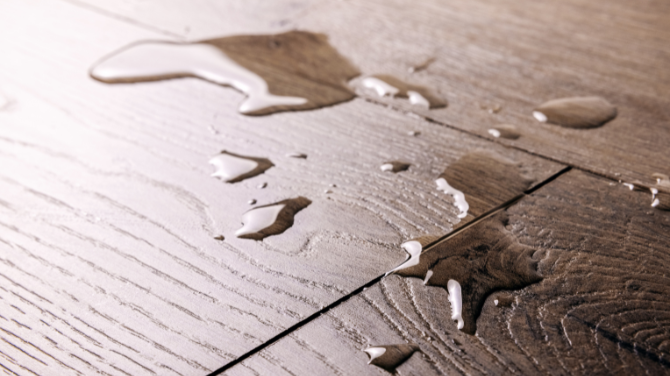Waterstops are an essential component of waterproofing construction joints. These flexible, strip-like materials are used to seal and prevent water from penetrating the joint between two sections of concrete or other building materials. They are typically installed in new construction, as well as in retrofit and repair projects.
Construction joints are necessary for all types of structures, including buildings, bridges, and dams. They are used to accommodate movement and expansion, as well as to separate different phases of construction. However, these joints can also be a weak point in the structure, allowing water to seep in and cause damage. Waterstops are used to prevent this from happening by creating a watertight seal.
There are several types of water stops available, each with its own unique characteristics and uses. The most common types include:
PVC waterstops:
These are the most widely used type of waterstop. They are made from polyvinyl chloride (PVC) and are known for their durability, flexibility, and resistance to chemicals. PVC waterstops are easy to install and are suitable for both new construction and retrofit projects.
Rubber waterstops:
Rubber waterstops are made from natural or synthetic rubber and are known for their high flexibility and elongation properties. They are suitable for use in joints that are subject to movement or expansion. Rubber waterstops are also resistant to chemicals and UV radiation.
Bituminous waterstops:
Bituminous waterstops are made from asphalt or bitumen and are used primarily in older construction projects. They are less flexible than PVC or rubber waterstops and are not recommended for use in joints that are subject to movement or expansion.
Hybrid waterstops:
Hybrid waterstops are a combination of PVC and rubber materials. They are designed to be more flexible and durable than PVC waterstops, while also being more resistant to chemicals and UV radiation than rubber waterstops.
When selecting a waterstop, it is important to consider the specific requirements of the project, including the type of joint, the expected movement and expansion, and the chemical exposure. It is also important to choose a waterstop that is easy to install and maintain.
Proper installation is crucial for the performance of waterstops. The waterstop should be placed in a clean and dry joint, with the ends butted together and the waterstop centered in the joint. The waterstop should be held in place with concrete or grout, and a minimum concrete cover of 2 inches should be maintained over the water stop.
Waterstops are an effective solution for waterproofing construction joints and preventing water infiltration. They are available in a variety of materials and types, each with its own unique properties and uses. By selecting the right water stop for the project and ensuring proper installation, builders can ensure that the structure remains watertight and protected from damage.
It’s also worth noting that regular maintenance and inspections should be carried out on waterstops to ensure they are functioning properly. This includes checking for any signs of damage, such as cracks or breaks, and making repairs as necessary. Additionally, the surrounding concrete or other building materials should be inspected for signs of water infiltration, as this can indicate that the waterstop is not functioning properly. Another important aspect to consider when waterproofing construction joints is the use of sealants. Sealants are a complementary solution to waterstops, and they are used to fill in any gaps or crevices that may be present in the joint. They are typically applied after the waterstop has been installed and are designed to provide an additional barrier against water infiltration.
In addition to their use in construction joints, waterstops can also be used in other areas of a building or structure that may be prone to water infiltration. This includes areas around windows, doors, and other openings, as well as basements and underground structures. For example, if a building has metal elements, such as steel reinforcement bars, it’s important to use waterstops that are compatible with metal and will not react with it. Similarly, if a structure is located in an area with high levels of salt or other chemicals, it’s important to use waterstops that are resistant to these substances.
It’s also important to consider the environment in which the structure is located. For example, if a building is located in an area with extreme temperatures, it’s important to use waterstops that can withstand these temperatures and maintain their flexibility. The traditional waterstops, there are also new and advanced products available in the market that can provide added benefits. For example, there are waterstops that are self-sealing, meaning they will automatically seal any cracks or breaks that may occur over time. There are also waterstops that are designed to be used in areas with high water pressure, such as underground structures.
Conclusion
In conclusion, Waterstops are an essential component of waterproofing construction joints, without which the building could be at risk of water infiltration and damage. The selection of the right type of waterstop and proper installation is crucial for the performance of waterstops. By considering the specific requirements of the project, builders can ensure that the structure remains watertight and protected from damage. It’s important to consider not only the type of joint and the movement and expansion that will occur, but also the materials used in construction, the environment and the conditions of the location, and the compatibility with other materials. Additionally, it is important to consider the added benefits of new and advanced products, such as self-sealing and waterstops for high water pressure. By taking all these factors into consideration, builders can ensure that the structure remains watertight and protected from damage and that the investment is protected.
Redwop is a prime waterproofing manufacturer in India that is involved in the production of a wide array of waterproofing solutions used in numerous residential and commercial construction applications. These solutions are manufactured using state-of-the-art technology and comply with international standards of construction.

